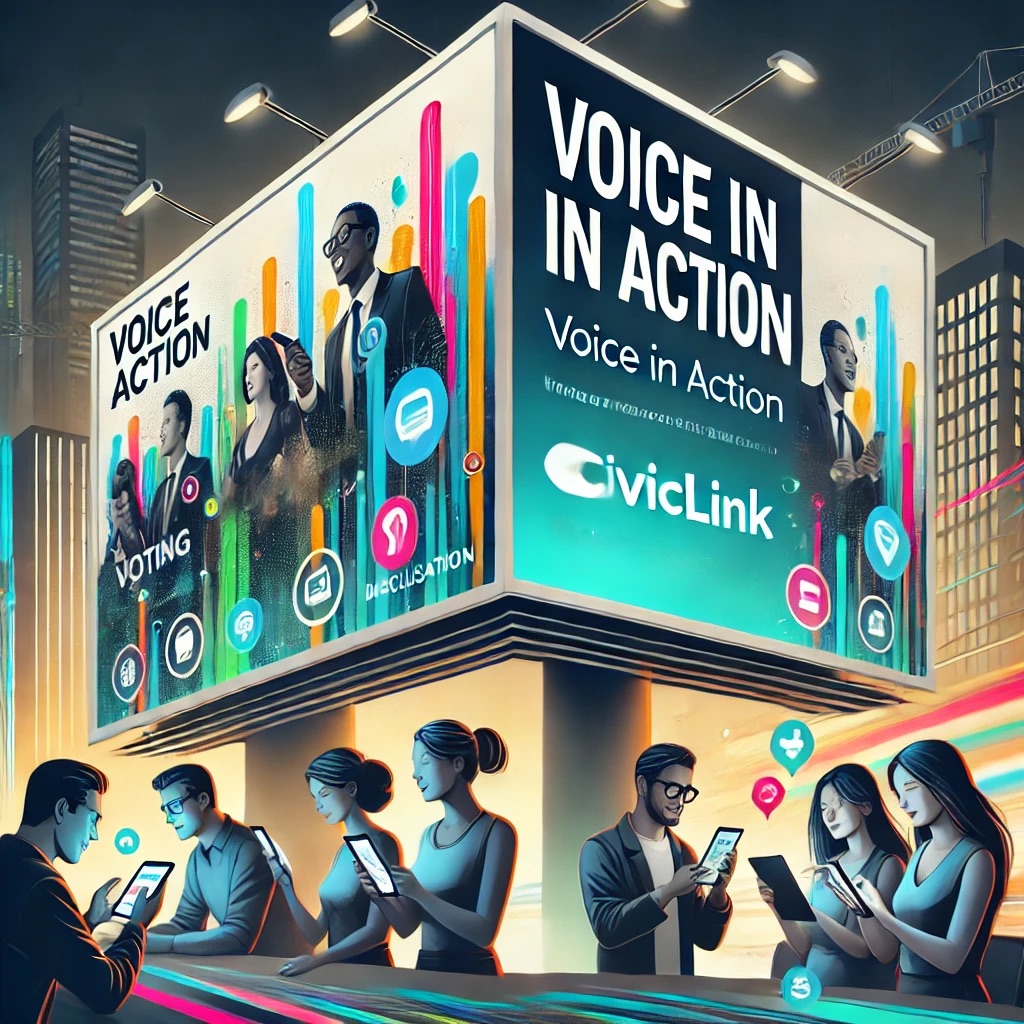This is a concept for a platform that offers a transformative way for society to engage with government by bridging the gap between citizens and decision-makers through real-time, transparent, and inclusive participation. Unlike traditional systems that often leave the public feeling disconnected and unheard, CivicLink or PAP would look to empower individuals to directly contribute ideas, vote on key issues, and engage in meaningful discussions about legislation.
By leveraging secure and decentralized technology, it ensures fairness, accountability, and privacy while removing barriers to access. This approach not only fosters a stronger sense of civic responsibility but also holds representatives accountable to the collective voice of the people.
By creating a collaborative space for dialogue and decision-making, CivicLink, PAP or any other similar platform would serve to reinvigorate democracy, making governance a shared effort that reflects the needs and values of society as a whole.
Below is a breakdown of how an app would work and its features.
App Name: CivicLink: Your Voice in Action
Core Features
1. Home Dashboard
• A personalized feed showing:
• Current proposals open for voting.
• Upcoming parliamentary debates or livestreams.
• Recent legislative updates and MP activity.
• Quick navigation buttons for “Submit Ideas,” “Vote,” and “Debate Live.”
2. Submit Ideas
• Form Interface:
• Users can submit issues or policy ideas.
• Categorization options (e.g., health, environment, education).
• Character limit and optional attachments (e.g., PDFs or images for supporting data).
• Proposal Status Tracker:
• After submission, users can track their idea’s progress (e.g., “Under Review,” “Open for Voting”).
3. Voting Section
• Proposals:
• List of open proposals with summaries and user-submitted justifications.
• Ranked-choice voting interface for prioritization.
• Legislation Votes:
• Summaries of bills currently in discussion.
• Non-binding advisory voting for public input.
4. Live Debate Participation
• Livestream Integration:
• Real-time streaming of parliamentary debates.
• Comment Submission:
• Public comments are flagged by regional representatives for relevance and presented to MPs during debates.
• Live Polling:
• Quick polls on key issues being debated, with instant results displayed for public and MPs.
5. Forums
• Community Discussions:
• Topic-specific forums for citizens to discuss proposals and legislation.
• Constituency Forums:
• Regional spaces where users can engage with their MP and local community.
• Moderated by volunteers to maintain civility and focus.
6. MP Dashboard
• Displays detailed information about the user’s elected representative:
• Voting records.
• Attendance in debates.
• Direct messages or town hall schedules.
• Video or written updates explaining recent decisions.
7. Notifications
• Real-time alerts for:
• New proposals in the user’s areas of interest.
• Upcoming deadlines for voting or submitting ideas.
• Livestreams starting soon.
8. Educational Hub
• Explainers:
• Simplified summaries of complex policies and bills.
• Interactive Simulations:
• Users can adjust variables (e.g., budget allocations) to see potential policy outcomes.
• Civic Guides:
• Tutorials on how government works and how to effectively participate.
9. Transparency Tools
• Blockchain Explorer:
• Publicly accessible logs of votes, proposals, and decisions.
• Legislation Tracker:
• Real-time updates on the progress of bills through parliament.
User Flow
1. Sign-Up and Verification
• Users create an account with basic details and verify identity through existing voter registration or government-issued ID.
• After verification, users are assigned to their constituency group.
2. Personalized Dashboard
• On login, users see updates tailored to their interests and region.
3. Engage in Processes
• Submit Ideas: Add proposals to be voted on by the public.
• Vote: Participate in proposal ranking or advisory votes on legislation.
• Debate: Watch livestreams, submit questions, and participate in live polling.
4. Track Outcomes
• Users can see how their input influenced discussions and decisions.
Implementation Plan
1. Development Stages
• Phase 1: Build a minimum viable product (MVP) with basic functionality (voting, proposals, and livestreams).
• Phase 2: Add community forums, MP dashboards, and interactive education tools.
• Phase 3: Integrate blockchain for secure voting and proposal tracking.
2. Security and Privacy
• Data Encryption: Protect user information and input.
• Blockchain Verification: Ensure transparency and prevent tampering with votes or submissions.
• Anonymity Options: Allow users to participate without revealing personal details publicly.
3. Accessibility
• Design for low-bandwidth environments and compatibility with assistive technologies.
• Offer the app in multiple languages and include offline participation options (e.g., kiosks for public use).
4. Launch Strategy
• Beta Test: Begin with a pilot in a single constituency to refine functionality.
• Public Awareness Campaign: Use social media, local events, and educational institutions to promote app usage.
• Feedback Loops: Regularly gather user feedback for improvements.
Potential Challenges and Solutions
1. Adoption Resistance
• Solution: Highlight the app’s transparency, non-partisan nature, and benefits through educational campaigns.
2. Digital Divide
• Solution: Provide alternative methods for participation (e.g., community kiosks, SMS voting).
3. Scalability
• Solution: Use cloud infrastructure to handle increased usage as the app expands nationwide.
Impact
This app would transform how citizens engage with their government, empowering them to contribute meaningfully to decision-making processes.
It would bridge the gap between the public and their representatives, fostering trust, accountability, and a stronger democracy.
People are already deeply connected to their phones, making an app like CivicLink the ideal platform for engaging with government. It meets citizens where they are, on their devices, and transforms idle scrolling into meaningful participation.
Instead of passively consuming news or social media, people can use the app to actively shape policies, vote on issues, and engage in discussions that impact their communities.
The convenience of an app ensures accessibility for a broad audience, fostering civic engagement in a way that feels natural and intuitive. By leveraging the tools people already use daily, CivicLink makes democracy more accessible, efficient, and relevant to modern life.

